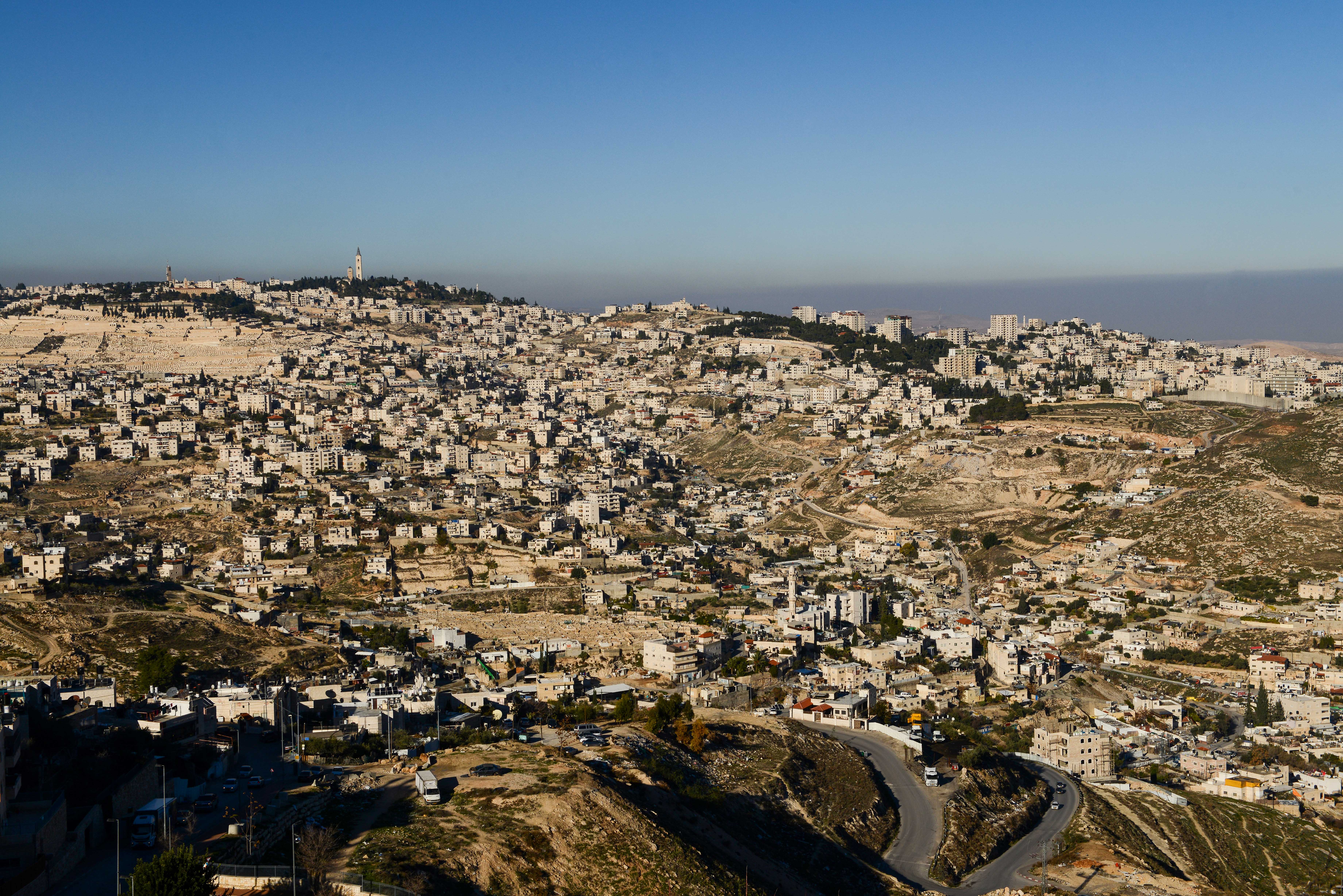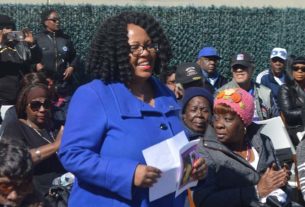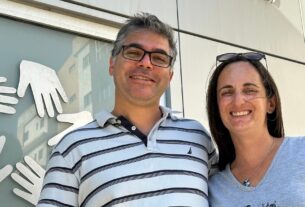Photo Credit: Muammar Awad / Flash 90

by Nadav Shragai / Israel Hayom
Ahmad Jabis and Basel Abidat, who had marked Israel’s 72nd Independence Day (which falls five months from now) on their calendars as a possible day on which to commit mass murder, were arrested last month. The indictment filed against them last week revealed that they had been planning to kill “as many Jews as possible” at either Sultan’s Pool or Safra Square in Jerusalem—both sites visited by tens of thousands of Israelis on national holidays.
‘);
_avp.push({ tagid: article_top_ad_tagid, alias: ‘/’, type: ‘banner’, zid: ThisAdID, pid: 16, onscroll: 0 });
On the one hand, Jabis and Abidat’s story is nothing new — both are residents of Jabel Mukaber, a neighborhood that has been home to the largest number of perpetrators of terrorist attacks and attempted terrorist attacks in east Jerusalem per capita since the second intifada (2000-2005). Still, there is something surprising in that the two were considering committing their bloodshed in the name of Islamic State (ISIS), and were even in touch with the organization.
Abidat had tried to cross the border into Sinai to join the ISIS forces fighting there, and over the past few years, Jabis had several conversations with one of his uncles, Mohammed Ziyad, who fought with ISIS in Iraq. When Israel Security Agency (Shin Bet) agents confiscated Jabis’s computer, they discovered files with names such as, “How to make a bomb,” “The knife—the weapon of the Salafi warrior” and “Murdering an abductee.”
Fadi al-Qanbar, also from Jabel Mukaber, was also influenced by the ISIS Salafi-jihadist ideology—but the Shin Bet didn’t manage to stop him in time. In 2017, al-Qanbar plowed a truck into a group of Israeli soldiers on Jerusalem’s Armon Hanatziv promenade, killing four and wounding 15 before being shot and killed by the soldiers. His sister said he had died “a most beautiful martyr’s death.” Al-Qanbar had apparently been inspired by two much more fatal car-ramming attacks—also committed by ISIS acolytes using trucks— in which nearly 100 people were murdered. The first took place in Nice, France, and the second only weeks later, in Berlin.
Al-Qanbar, Jabis and Abidat are just three of the many terrorists to have come out of Jabel Mukaber. The rate of attacks originating there is similar to that of the notorious Hebron-based Kawasme clan, or possibly even that of the village of Kobar near Ramallah.

So what makes Jabel Mukaber the Jerusalem equivalent of terrorism “factories” in Judea and Samaria? Before answering this question, we should take a look at the numbers: Since the second intifada, Jabel Mukaber residents have been involved in over 200 terrorist attacks and attempted attacks.
On the main street of the neighborhood—which two decades ago petitioned the High Court to remain on the Israeli side of the security barrier—four young locals were fatally shot by police in 2001. A year later, in 2002, two residents—Ramadan and Fami Mashour—helped Hamas member Muhammad al-Ghoul carry out his suicide bombing on the No. 32 bus near Jerusalem’s Pat Junction. That bombing killed 19 people and wounded 74.
The perpetrator of the mass shooting at Merkaz Harav Yeshiva in 2008 was also from Jabel Mukaber. Alaa Abu Dhein killed eight yeshiva students and wounded nine more in that attack. The same year, the neighborhood produced the first terrorist vehicular assault: Qassem Mughrabi drove his car into a group of soldiers at Tzahal Square in Jerusalem, wounding 17 of them. An IDF officer and a yeshiva student shot and killed him.
In 2014, Muhammad Naif Jabis—a relative of Ahmad Jabis—used a tractor to kill Avraham Wallis. Naif was also related to Merkaz HaRav shooter Abu Dhein.
Another clan from the village, Abu Jamal, also has a long history of terrorist involvement. A combined shooting/stabbing attack at a synagogue in Jerusalem’s Har Nof neighborhood in 2014, in which five worshipers and a police officer were murdered, was committed by cousins Ghassan and Uday Abu Jamal. They were related to Jamal Abu Jamal, who was sentenced to 22 years in prison for attempting to stab a police officer.
Their cousin Alaa Abu Jamal expressed pride in the Har Nof attack. Speaking to Ynet in October 2015, he said that such attacks were “something standard, to be expected of any person who has courage and sense of belonging to his people and to Islam.” A year later, Alaa Abu Jamal followed word with deed, running over Rabbi Yeshayahu Krishevsky in Jerusalem’s Geula neighborhood. Alaa was shot and killed, and it later turned out that he, too, had been inspired by ISIS.
Just a year ago, another Abu Jamal family member from Jabel Mukaber, Abdel Rahman Abu Jamal, entered a police station in Armon Hanatziv and stabbed four police officers.
In 2015, Ahmed Sarur, Anas Ouisat and Basel Abidat (from the same clan as the Basel Abidat mentioned above) were planning to dress as ultra-Orthodox Jews to gain entry into an event in Jerusalem’s Bayit Vegan neighborhood, with the intent of shooting as many of the celebrants as possible.
In a particularly horrifying incident in 2014, Aziz Awisat of Jabel Mukaber cut the gas lines of nine apartment buildings, hoping to blow them up. In one case, he left a burning candle a meter from the gas canisters.
‘They very much enjoy the Western world, but also loathe it’
Arik Barbing, a 27-year veteran of the Shin Bet who served as head of the agency’s Jerusalem and Judea and Samaria division, characterizes Jabel Mukaber as a village with a tribal, Bedouin, ethnic and zealous tradition.
“It’s a society with strong religious tenacity. A lot of them are devout in visiting the mosque and studying religion,” says Barbing.
“It’s also a society that is not open to contact with other residents of Jerusalem … in Jerusalem, ISIS almost doesn’t exist, but the little it does is mostly in Jabel Mukaber. There are individuals there who connect to the idea of a global Islamic caliphate and global jihad, and the belief in the need to change the world and liberate it from the Crusaders and the Jews through extreme acts that feed off religion,” he adds.
Barbing notes that even though in Jabel Mukaber one can see a process of “Israelization” and integration, “Despite what we previously thought, this Israelization is not leading to moderation. They very much enjoy the Western world, but also loathe it. Israel, as an open, western society, gives them an enormous amount. They take advantage of that, but deep down, hate us even more because it clashes with Jabel Mukaber traditions that are stubborn and dominant.
“When I was responsible for Jerusalem in the Shin Bet, we identified the Jerusalem ‘tough guy’ type—someone who wears expensive jeans and T-shirts he bought at the mall, wears his hair like an Israeli and adopts Israeli mannerisms, but inside is hard-core religious.”
Ben Avrahami, an expert on eastern Jerusalem affairs and a research fellow at the Jerusalem Center for Public Affairs, also notes the enduring tribal-clan character of Jabel Mukaber. Avrahami finds similarities between the neighborhood and Bedouin villages such as Hura in the Negev, where residents have also been exposed to ISIS ideology. He has another interesting insight:
“Often, people claim that their socio-economic situation is what pushes them to desperation and radicalization. I disagree. Jabel Mukaber might not be a wealthy village, but the socio-economic situation there—as poor as it looks—isn’t bad. Jamis and Abidat are from some of the biggest and wealthiest families in the village. … It’s not an impoverished neighborhood, but it is a kind of a bubble that is difficult for entities that preach religious moderation or progress to penetrate. Israeli involvement is almost unseen there.”
One of the fields Avrahami has been studying lately is social-media use in eastern Jerusalem. This is how he found “MukaberNet,” which he calls “one of the main and most influential [social media] pillars” in eastern Jerusalem.
The editors present it as a local news agency, but Avrahami says that “in effect, it’s one of the strongest propaganda outlets in east Jerusalem—and the attitude is not one of peace and reconciliation.”
“There is a lot of glorification of martyrs and noting of anniversaries of terrorist attacks carried out by village residents. Every time a local prisoner is released, it’s a festival. It’s also a space for information and news, but there is plenty of incitement and hate discourse,” says Avrahami.
All these things correspond with what veteran Jerusalem researcher Israel Kimhi wrote two years ago in a study about Jabel Mukaber he published with Ahmed Asmar. Kimhi remembers one conversation in particular he held with a group of teachers, who describes their pupils and sometimes their parents as “Bedouin who fled the desert.” The teachers complained about the level of violence in the village school. At least one time, after the terrorist Bahaa Alian—who committed shooting and stabbing attacks on a bus in Armon Hanatziv—the high school’s Facebook page ran poems praising martyrs, as well as content identifying with Alian.
In Jabel Mukaber, which suffers from a serious lack of working infrastructure, it’s hard to talk with the residents about the major role the village plays in terrorist attacks. The bonds with their Jewish neighbors in Armon Hanatziv have weakened over the years, but most of the residents are employed by Jews in the west of the city and hold residency cards, which allow them to vote in municipal elections and give them access to every place in the city and throughout the country.
Mahmoud Awisat, a well-known figure in the village who is also active in the local PTA, rejects terrorism and violence, but does not reject the causal relationship between the many ways the village is neglected and the high rate of terrorism originating from it.
“Desperation reigns here,” says Awisat. “The authorities treat us like the enemy. Only in the past few days we tried to reattach an electric wire that was lying on one of the streets here for five days. No one would talk to us. We pay arnona [city taxes], but we don’t receive services like the Jewish neighborhoods do. There aren’t enough classrooms, not enough playgrounds, not enough sports facilities. There aren’t any building permits. There is no joy. In a reality like this, it’s very easy to brainwash youth who don’t see a normal future and seek it out in dangerous places. Personally, I despair.”
This article first appeared in Israel Hayom.
‘);
_avp.push({ tagid: article_top_ad_tagid, alias: ‘/’, type: ‘banner’, zid: ThisAdID, pid: 16, onscroll: 10 });



